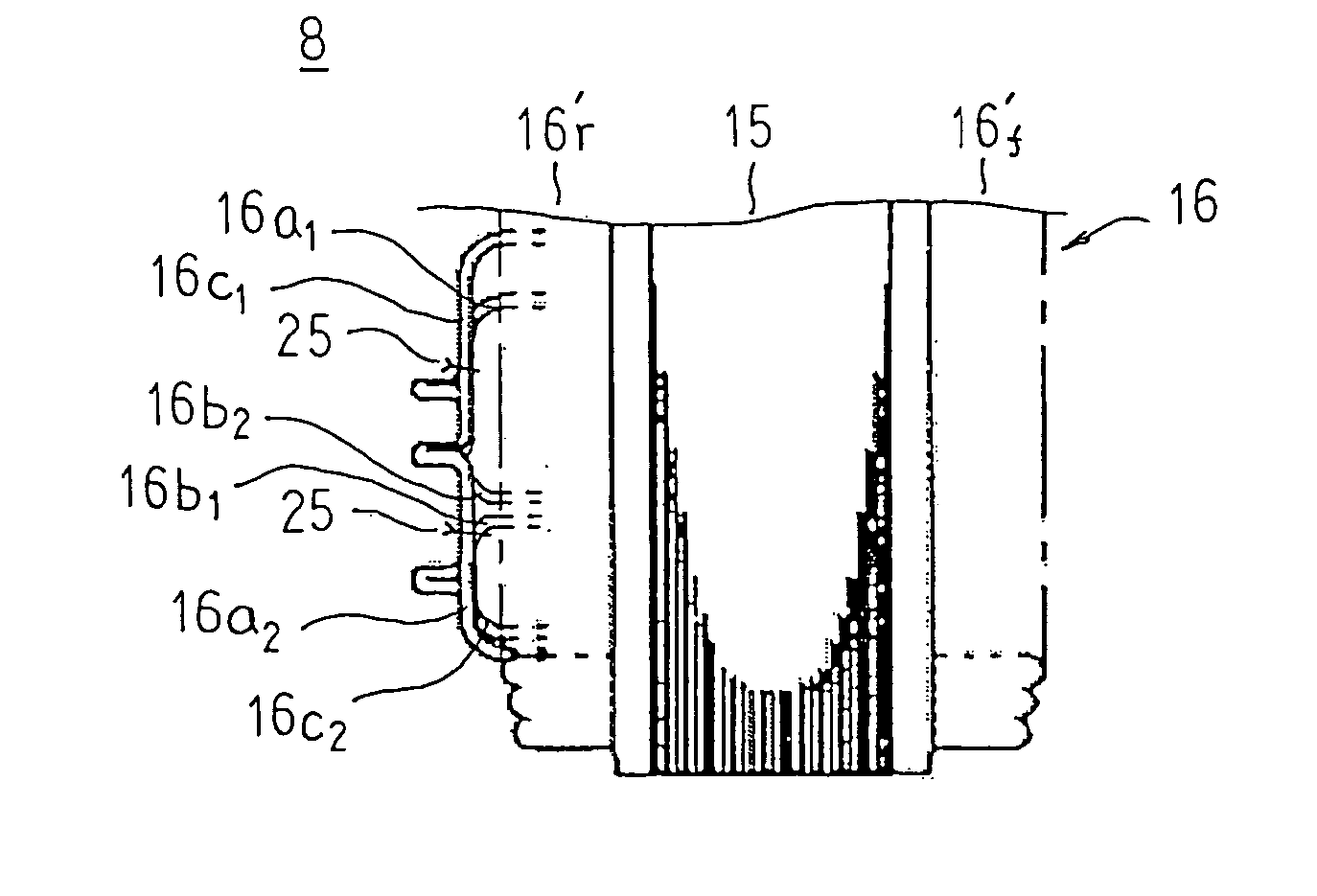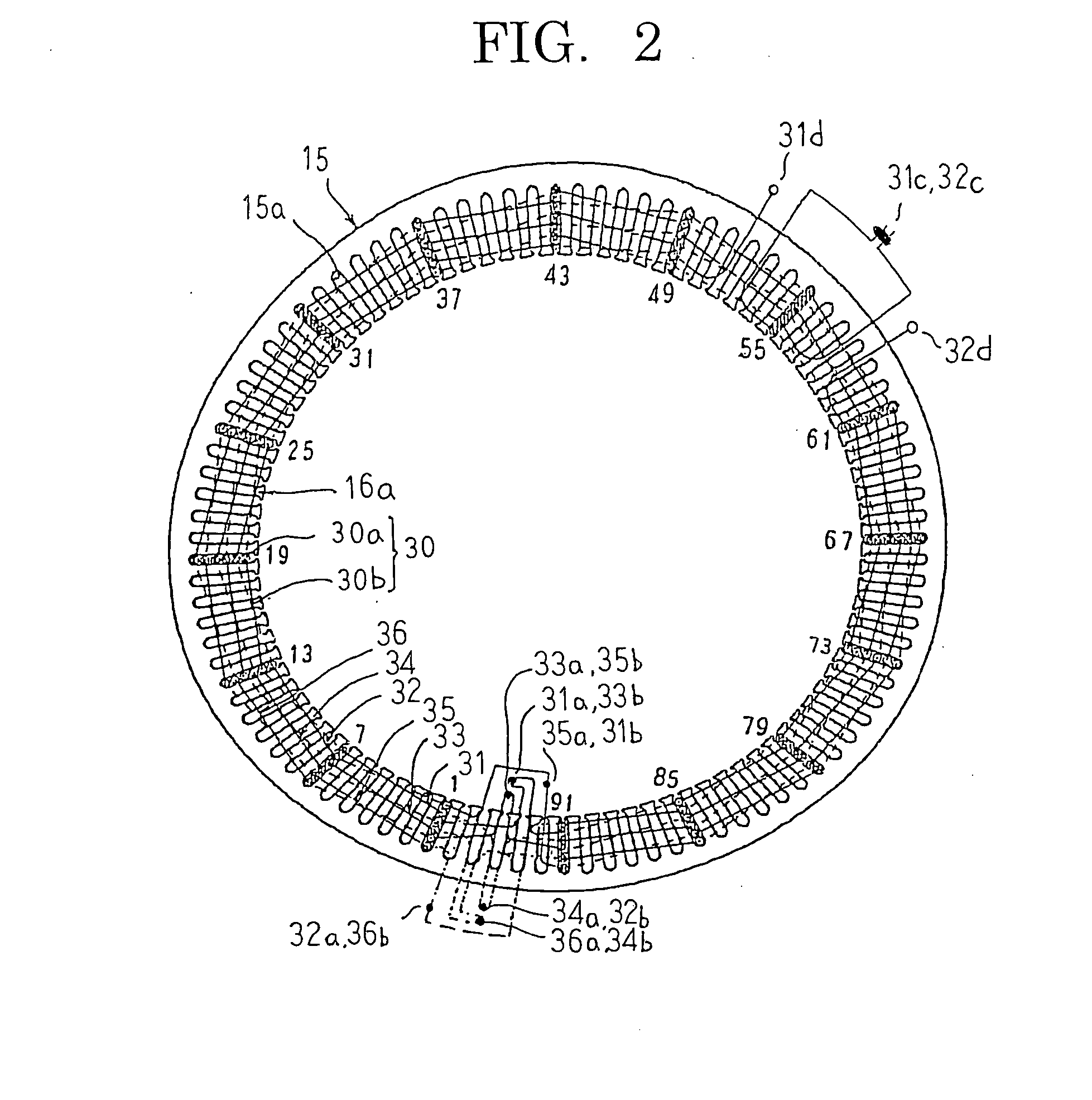Dynamoelectric stator
a dynamoelectric stator and stator body technology, applied in the direction of dynamo-electric components, synchronous machines, windings, etc., can solve the problems of reducing the reliability affecting the work efficiency affecting the performance of the dynamoelectric machine, so as to improve the vibration resistance of the lead portion, increase the work or cost, and reduce the effect of area
- Summary
- Abstract
- Description
- Claims
- Application Information
AI Technical Summary
Benefits of technology
Problems solved by technology
Method used
Image
Examples
Embodiment Construction
[0019] A preferred embodiment of the present invention will now be explained with reference to the drawings.
[0020]FIG. 1 is a longitudinal section showing a dynamoelectric machine mounted with a stator according to a preferred embodiment of the present invention, FIG. 2 is a rear-end end elevation of a stator core explaining a configuration of a stator winding in the stator according to the preferred embodiment of the present invention, FIG. 3 is a circuit diagram for the dynamoelectric machine mounted with the stator according to the preferred embodiment of the present invention, FIG. 4 is a side elevation showing part of the stator according to the preferred embodiment of the present invention, and FIG. 5 is a view from a rear end of part of the stator according to the preferred embodiment of the present invention.
[0021] In FIG. 1, a dynamoelectric machine includes: a case 3 constituted by a front bracket 1 and a rear bracket 2 made of aluminum that are each generally bowl-shape...
PUM
 Login to View More
Login to View More Abstract
Description
Claims
Application Information
 Login to View More
Login to View More - R&D
- Intellectual Property
- Life Sciences
- Materials
- Tech Scout
- Unparalleled Data Quality
- Higher Quality Content
- 60% Fewer Hallucinations
Browse by: Latest US Patents, China's latest patents, Technical Efficacy Thesaurus, Application Domain, Technology Topic, Popular Technical Reports.
© 2025 PatSnap. All rights reserved.Legal|Privacy policy|Modern Slavery Act Transparency Statement|Sitemap|About US| Contact US: help@patsnap.com



